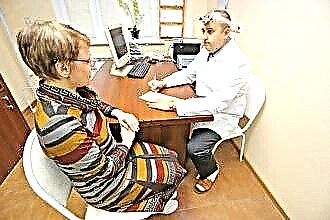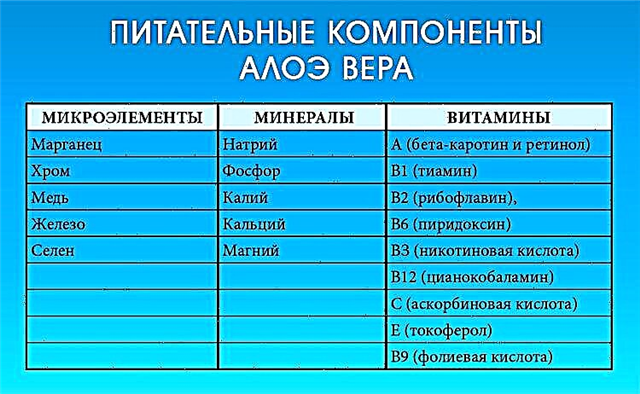Like any other inflammatory disease, sinusitis involves not only the affected maxillary sinus in the process, but also neighboring tissues, and even other body systems. The cure for sinusitis is the suppression of pathogens and the removal of the main symptoms, both local and general. Patients are often interested in how to find out the duration of treatment for inflammation of the maxillary sinuses and how to understand that the sinusitis has passed. These issues deserve more detailed consideration.
Symptoms typical for sinusitis
 To make the correct diagnosis and develop subsequent treatment, the otolaryngologist carefully examines all the symptoms of the disease, using objective and subjective methods. Therefore, if there is a suspicion that some kind of inflammatory process occurs in the body (especially in the cavities of the skull), you should go to the hospital and undergo an examination. The duration and success of the recovery process largely depends on the timely detection of the disease and the beginning of its adequate therapy.
To make the correct diagnosis and develop subsequent treatment, the otolaryngologist carefully examines all the symptoms of the disease, using objective and subjective methods. Therefore, if there is a suspicion that some kind of inflammatory process occurs in the body (especially in the cavities of the skull), you should go to the hospital and undergo an examination. The duration and success of the recovery process largely depends on the timely detection of the disease and the beginning of its adequate therapy.
Misinterpretation of symptoms, characteristic of self-medication, can lead to an advanced stage of the disease and its subsequent chronicity.
The most prominent symptoms of maxillary sinusitis are:
- Elevated body temperature in the range from 37-37.5 degrees at the initial stage or in the chronic form of the disease during the period of remission up to 39 degrees in the acute purulent form. Fever and chills are common.
- Persistent runny nose. The color of the discharge can change from white at the initial stage, to green and yellow in the presence of a purulent component. Blowing your nose does not improve the situation, since mucus is constantly excreted from the affected adnexal chamber. With a sluggish form in the nasal cavity, there is always a "streak of pus" from under the middle shell. Traditional medicines do not give the desired effect.
- The nose is stuffed up alternately on one side or the other. Nasal breathing is very difficult, the patient begins to breathe through the mouth, from which he feels constant dryness in the mouth. Snoring appears, which interferes with proper sleep and can lead to insomnia.
- A feeling of fullness and pressing (sometimes throbbing) pain in the area of the affected sinuses. Aggravated by feeling and tilting the head forward.
- A headache that tends to radiate to the teeth, forehead, ears. Sometimes it has a non-localized spilled character.
- Cough in which expectorants do not work. It develops due to the constant flow of exudate with pus along the walls of the throat.
- Swelling of the tissues around the eyes and eyelids.
- Vileness of the voice.
- Signs of general intoxication: muscle aches, fatigue, weakness, reduced ability to work, a feeling of pressure in the ears.

In case of late initiation of treatment and the transition of an acute form of sinusitis to a chronic one, the duration of treatment may increase several times.
How long to be treated for sinusitis
Inflammation of the maxillary pockets can take different forms. If the disease is limited only to the acute form, without purulent formations, then the duration of therapy is, as a rule, several days. If sinusitis is complicated by the presence of pathogenic bacteria, then the treatment will take several weeks.
The effectiveness of therapy directly depends on the correct diagnosis and clarification of the cause of the disease, its causative agent. Rather than self-medicating and taking some antibiotics at random on the advice of friends or information on Internet resources, it is better to spend a couple of days on a full examination. The doctor will make a professional conclusion based on:
- conversations with the patient;
- visual examination of the nasal cavity (rhinoscopy);
- general blood test (from a finger);
- X-rays or tomography of the paranasal sinuses;
- the results of laboratory tests of a nasal swab.
Taking antibiotics without the presence of bacterial flora will not only be useless, but even harmful to the immune system, already weakened by the disease. If bacteria are present in the air pockets and multiply, then you need to know exactly what type of these bacteria, and, based on this, prescribe a course of specific antibiotics.
 Depending on the form of the course, the duration of sinusitis treatment can be:
Depending on the form of the course, the duration of sinusitis treatment can be:
- Subacute. It looks very similar to the common cold, with the right approach to therapy, it usually lasts no more than 1-2 weeks.
- Sharp. It is especially often manifested during seasonal outbreaks of viral infections. It is characterized by an abrupt development and pronounced symptoms, most often it turns into a purulent form after the attachment of pathogens. Lasts approximately 2 weeks, maximum a month with the necessary medications.
- Chronic. Often it becomes a consequence of the transition from subacute and acute forms in the absence of adequate and timely treatment or, in general, with neglect of the disease. The inflammatory process occurs in the maxillary cavities constantly, then dying out during the period of remission, then again activating during the period of exacerbation (1-2 times a year). With the right approach, the disease can be overcome in 6-8 months (including the recovery period). However, some researchers are of the opinion that it is impossible to completely cure chronic sinusitis, and even after the disappearance of all signs of the disease, a person remains predisposed to it.
Basic requirements for the therapy of the disease
With a catarrhal course of the disease, the doctor is limited to the usual anti-cold and decongestant drugs, as well as rinsing the nose with saline solutions and special medicines. This approach allows you to quickly remove mucus from the sinuses and prevent pathogenic bacteria from entering.
However, the main problem is that people at the stage of catarrhal inflammation rarely see a doctor.
They either do not take any measures, believing that this is a common cold, and it will go away on its own, or they self-medicate, only aggravating the situation and wasting precious time.
Therefore, we can safely state that the majority of maxillary sinusitis occurs in an acute or purulent form with the addition of bacterial flora. In this case, antibiotic therapy becomes the main one:
 If the patient asked for help when the microbes have not yet gained full strength, then the use of correctly selected antibiotics for 5-7 days can suppress the pathogen and lead to recovery, although residual effects will be observed for some time.
If the patient asked for help when the microbes have not yet gained full strength, then the use of correctly selected antibiotics for 5-7 days can suppress the pathogen and lead to recovery, although residual effects will be observed for some time.- With the onset of the active stage of microbial development and filling the cavity with purulent secretions, the attending physician often has to change the drugs during the course of the disease. The reason for this is the resistance (resistance) of bacteria against some type of antibiotic, or an attack on the body of several types of microorganisms at once, which should be dealt with in turn. Usually, the patient takes a 5-7-day course of one type of drug (for example, penicillins), and then the same course of another (say, macrolides). In such cases, no significant improvement can be expected earlier than after 2 weeks.
- Chronic sinusitis should be treated for a long time. Sometimes ENT doctors prescribe small doses of relatively safe macrolide antibiotics for several months to suppress the focus of infection.In addition, you need to undergo a rehabilitation course, which includes general and local measures to restore the full functioning of the respiratory system.
Antibiotic therapy is always accompanied by the intake of auxiliary medications: analgesics, mucolytics, antiseptics, corticosteroids, vasoconstrictor and antihistamines. Only a comprehensive approach to treatment can guarantee a positive outcome.
Signs of recovery from sinusitis
If all the prescriptions of the doctor are fulfilled, the patient may notice positive dynamics in his state of health. The main signs of recovery are:
- Body temperature. She returns to normal or stays at a level not higher than 37.2 degrees for about a week after the end of the medication. If the subfebrile temperature does not subside after 7 days, it is worth undergoing an additional examination in order to avoid the development of a latent (chronic) form of sinusitis.
- Discharge from the nose. The purulent component in the exudate disappears, the snot becomes white and thick, their number decreases until it disappears completely.
 When flushing the accessory chambers, the saline solution with drugs should not contain pus particles.
When flushing the accessory chambers, the saline solution with drugs should not contain pus particles. - The pain syndrome disappears, the feeling of pressure and distention in the projection of the sinuses, eye orbits, forehead and nose no longer bothers. Tilting the head forward does not cause discomfort.
- Nasal breathing is normalized, thanks to this, a person gets rid of night snoring and insomnia, the previously oppressed sense of smell is exacerbated.
- The general state of health improves markedly, appetite appears, a surge of strength and an increase in efficiency are noted.
Often there is a situation when the drugs prescribed by the doctor according to the scheme should be taken for several more days, and the patient's condition is good, signs of recovery are obvious. In such cases, it is not recommended to interrupt the course of antibiotic therapy, since bacteria that are not completely destroyed in the sinuses can develop resistance to this antibiotic and subsequently not respond to its use. In addition, the remnants of the focus of infection in the body can provoke the transition of sinusitis into a chronic form.
To be sure of a complete recovery, you can undergo a control fluoroscopy. To understand the situation, you should compare the shade of the sinus and orbit area in the picture.
If they are equally dark, then the condition in the maxillary sinuses has returned to normal. If the picture shows the "milk effect", i.e. the projection of the accessory chambers is painted in light shades, this indicates an inflammatory process taking place inside and the accumulation of purulent contents. In this case, it is necessary to develop a new treatment regimen, taking into account the additional information received.

 If the patient asked for help when the microbes have not yet gained full strength, then the use of correctly selected antibiotics for 5-7 days can suppress the pathogen and lead to recovery, although residual effects will be observed for some time.
If the patient asked for help when the microbes have not yet gained full strength, then the use of correctly selected antibiotics for 5-7 days can suppress the pathogen and lead to recovery, although residual effects will be observed for some time. When flushing the accessory chambers, the saline solution with drugs should not contain pus particles.
When flushing the accessory chambers, the saline solution with drugs should not contain pus particles.

